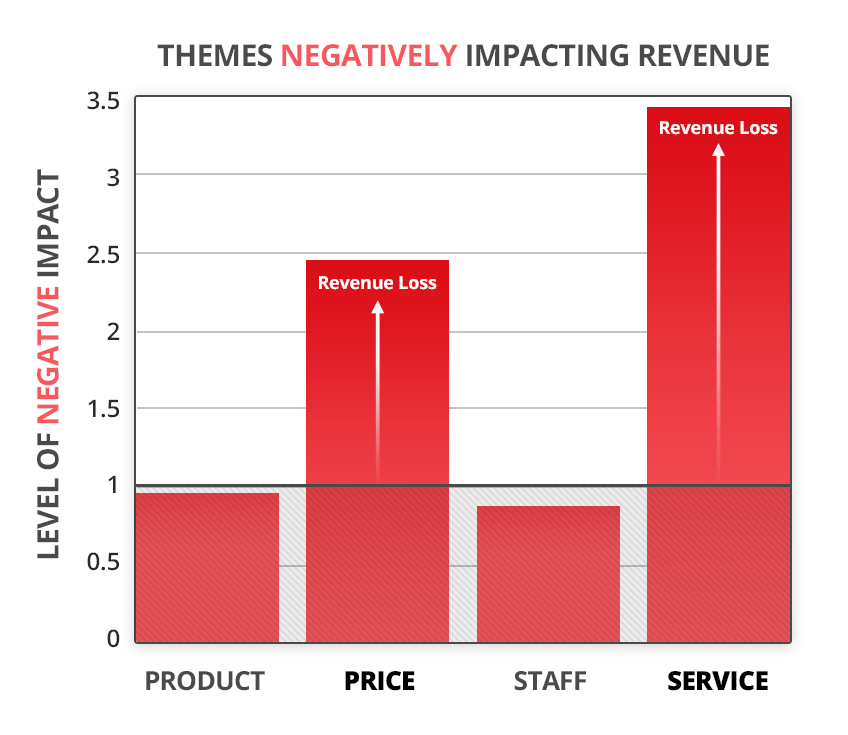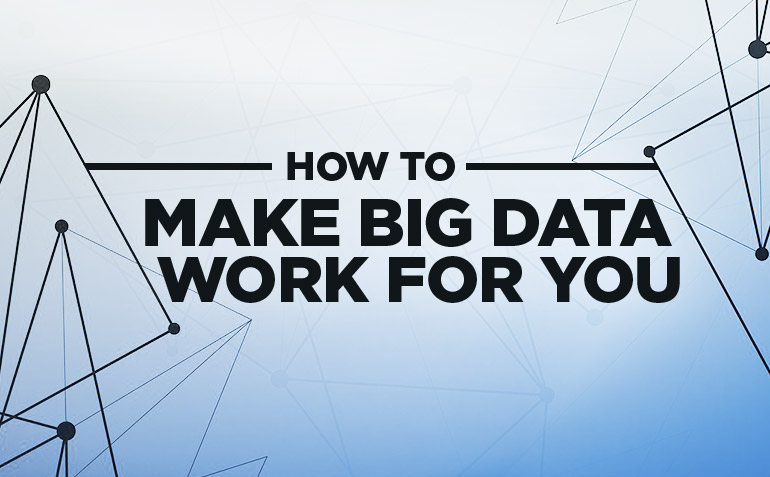Big Data Isn’t the Problem. The Approach Is.
If you were to survey marketing managers from a hundred separate companies on what big data means, likely, you will get a hundred different answers. Some might throw out words like “stats,” “insights,” “feedback,” or “trends,” while others, may call the data “confusing,” “unreliable,” or “ambiguous.”
100 different possible answers, all of which would likely be at least partially correct, depending on the participant’s approach to data.
“The excitement and anticipation of the potential of Big Data technologies and approaches is probably equally matched by the ambiguity, confusion and hype surrounding what these technologies are,” said Leonard D’Avolio, assistant professor at Harvard Medical School and CEO of health IT vendor Cyft.
While this quote was in reference to data in the healthcare industry, it’s applicable across industries.
D’Avolio elaborated on his position by saying that despite the ambiguity, confusion and frustration surrounding data, the information found has promise, if professionals learn how to use it in the appropriate way.
“What we learned from that, after the necessary growing pains of wasting billions of dollars trying to jam what is, in effect, new ways of doing business, into existing companies without a very exact focus on the problem you are trying to solve, and careful consideration of the existing constraints and workflows, is that you are very likely to end up basically running around with a hammer assuming every problem is a nail.” (Source)
The problem many people face is trying to include every bit of available data into their business strategy. They don’t focus on what impacts revenue, and get frustrated, saying the tool they were using did not work.
Just as a hammer is not the right tool for digging a hole, data, with no real connection to revenue, is not the right solution to figure out how to improve your business.
Filtering Out the Noise
In the case of consumer feedback data, such as online reviews, a number of companies will offer “solutions” in the form of reports that highlight what customers say most about a business. Words like “customer service,” “expensive” or “noisy” or “took too long” will often show up in these reports.
The problem is that words without insights; words without human intelligence and interpretation, are merely words.
Let’s take the word “expensive.” A restaurant with declining revenue, might see that word frequently in a report. This could lead them to assume that price is the cause of declining revenue. Unfortunately, the assumption that the word “expensive” equates to why people aren’t showing up, could be a misnomer.
One person might say, “With the slow delivery times, the expensive food is not worth it.” Another might say, “I can’t believe how expensive this place is compared to how bad the food tasted.”
In both these cases, the word “expensive” would show up in reporting. When taken from hundreds, or thousands of reviews, it’s reasonable to think that this was the key reason for the restaurant’s decline. However, in the examples above, the guests were not saying that the reason for their disappointment was the cost; merely, the poor service, or the food quality, didn’t justify what they were paying.
In this case, the word “expensive” is what we would call noise. It’s a very loud, noisy word, but on its own, doesn’t mean much and drowns out the meaningful insights below the surface.
A business manager shouldn’t see the word “expensive” and automatically lower prices. Businesses we’ve worked with had done this prior to speaking with us, and ultimately, it hurt their revenue even further.
At the end of the day, price comes down to a value perception. Is this product or service worth this much?
Sure, people will complain about price, but at the end of the day, if your product or service is good enough, people will keep coming back.
For Example

Disneyland raises prices year after year; people complain year after year, and yet, attendance continues to increase.
It’s not that Disney isn’t listening to complaints about the cost of a ticket, but instead, they realize that while people might not like the cost, it’s not enough to keep them away (not yet anyway).
The minute park attendance starts declining, and there is a direct correlation between price complaints and revenue decrease, you can be sure Disney will consider a price reduction.
Even still, they would have to consider every aspect of what people are saying about park costs.
For instance, “The expensive tickets are not worth it for how much time you spend waiting in long lines. You barely get on 3 rides, if you’re lucky.”
This is likely the type of complaint that caused Disney to create their fast pass system, which allows park goers to reserve a pass to ride an attraction at a later time without having to wait in a long line.
Even though “expensive” was mentioned in the complaint, “waiting in long lines” was the real source of the complaint. With this data, Disney would continue their focus on reducing wait times as opposed to consider price reductions.
Actionable Insights
So whether you’re a multi-billion dollar corporation like Disney, or run a smaller company, your approach to data should be the same: Uncover themes that lead to actionable insights, in order to increase revenue.
“… marketing programs that leverage big data need to turn to more strategic questions about longer term customer stickiness, loyalty, and relationships,” said Niraj Dawar of Harvard Business Review
“The questions that need to be asked of big data are not just what will trigger the next purchase, but what will get this customer to remain loyal; not just what price the customer is willing to pay for the next transaction, but what will be the customer’s life-time value; and not just what will get customers to switch in from a competitor, but what will prevent them from switching out when a competitor offers a better price … Rather than only asking how we can use data to better target customers, we need to ask how big data creates value for customers. That is, we need to shift from asking what big data can do for us, to what it can do for customers.” (Source)
We live in a world of educated consumers. With a tap of a mobile device screen, customers can instantly see if your business is right for them, based on the feedback of millions of other reviewers.
This is why data is important and the need for it will not go away anytime soon. As the Harvard Business article (referenced above) alluded to, this doesn’t mean simply figuring out how to bring people in, but how to keep them with you.
Identifying repeated themes can help with this.

Themes repeated over time, by multiple customers, will likely indicate the “stickiness” factor mentioned above. If you have the best sweet potato pie, or the fastest oil change in the south, you will likely be able to keep loyal customers.
However, if you consistently overcook your pies, or don’t deliver on your promise of fast service, you may be at risk of losing loyal customers.
Themes that may impact revenue include:
Product
- Are the portions the appropriate size to satisfy the guest?
- Are customers experiencing a lack of value?
Price
- Is the price justified by quality of service?
- Are price complaints really complaints about something operational?
Staff
- Is there a lack of product knowledge or behavior issues?
- Repeated regularly, these issues can definitely influence revenue.
Service
- For automotive maintenance, what are the expectations for completion of repairs?
- Service facilities may need to address repeated complaints that maintenance is taking longer than promised to complete.
- Inaccurate Orders
- Not completing what was marked off as “complete” when servicing a customer’s vehicle.
Surroundings
- If you are in the fine dining business, are multiple patrons complaining about the loud dinning room?
- Will this keep them from coming back?
Using the Right Tool for the Job
Big data is here to stay, and savvy and successful businesses will not discount it as too ambiguous or confusing. Rather, they will realize that it can be useful, if only it is approached in the right way. The same way a hammer can’t fix everything, data won’t solve all of your company’s woes. However, if you are able see a series of nails, in the form of consistent themes that are impacting your revenue, then you may just have the right tool.
To uncover which themes most impact your revenue, contact Merchant Centric.




